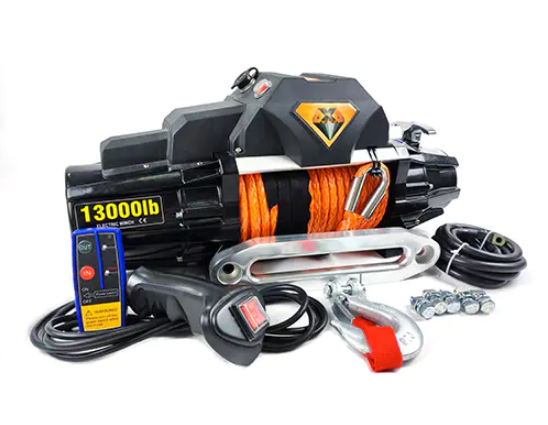Step-by-step Guide On How To Use A Portable Electric Winch Before utilizing a winch, prioritizing safety by adhering t...
Before utilizing a portable electric winch, ensure it is firmly affixed to a stable surface. Connect the winch to a powe...
Off-roading in a 4x4 vehicle can be an exhilarating adventure, but it also comes with its share of challenges and obstac...
When it comes to off-roading adventures, 4x4 vehicles offer a thrilling experience. However, even the most adventurous spirit needs to be prepared for the unexpected. That's where winching comes into play. In this comprehensive guide, we'll delve into the do's and don'ts of winching, providing you with valuable tips and tricks for safe 4x4 recovery.
Selecting the appropriate winch for your 4x4 vehicle is paramount. Consider factors such as your vehicle's weight, intended usage, and the terrain you'll encounter. Opt for a winch with a pulling capacity exceeding your vehicle's weight, ensuring it can handle any situation.
Regular winch maintenance is often overlooked but essential for longevity and performance. Inspect the cable or synthetic rope, ensuring there are no frays or kinks. Lubricate moving parts to prevent rust, and check the winch motor for signs of wear.
Before beginning any winching operation, carefully assess the terrain. Ensure your vehicle and anchor point are stable. Remove any obstacles that might impede the winching process, and keep bystanders at a safe distance.
Pushing a winch beyond its limits can result in damage or failure. Always adhere to the winch's specified capacity, taking into account the added weight of mud, snow, or inclines. If the situation demands more power, consider a pulley block to double your winch's pulling power.

12v/24v off Road Sc13.0wex Winch Black with Orange Synthetic
Recovery straps, when used correctly, can distribute the load evenly and reduce stress on both your vehicle and the winch. Employ them in conjunction with shackles and snatch blocks for added safety.
One common mistake is jerking the winch cable during operation. This abrupt motion can cause cable snapback, posing a severe safety hazard. Instead, apply steady and controlled tension on the cable while winching.
Personal safety should never be compromised. Wear appropriate safety gear, including gloves and eye protection, to shield yourself from potential hazards.
Never position yourself in the direct path of the winch cable or synthetic rope. In case of a sudden snap or failure, standing clear can save lives.
A well-thought-out recovery plan can prevent winching mishaps. Identify suitable anchor points and assess potential obstacles before you start the winching process.
Impatience can lead to mistakes. Take your time, maintain a steady pace, and communicate effectively with your recovery team if you have one.
In conclusion, mastering the art of winching is crucial for safe 4x4 recovery during off-roading adventures. By adhering to the do's and don'ts outlined in this guide, you'll not only enhance your safety but also protect your vehicle and equipment.
Remember to choose the right winch, perform regular maintenance, assess the terrain, and employ proper techniques. Safety should always be your top priority. With these tips and tricks, you'll be well-equipped to tackle challenging situations and ensure a successful 4x4 recovery.
If you want to read more information about Off-Road Winch, please click on the image below to get a free quote:

As a famous wholesale high power electric winches Manufacturers, We have a strong desire that we can double-win with our customer.
Add:Changtan Industrial Zone, Zhang shui Town, Haishu District, Ningbo, China
Tel:+86-18367483862
WeChat:+86-18367483862
WhatsApp:+86-151 6815 7361
E-mail:sales@hcwinches.com
E-mail:sales2@hcwinches.com
TOP
